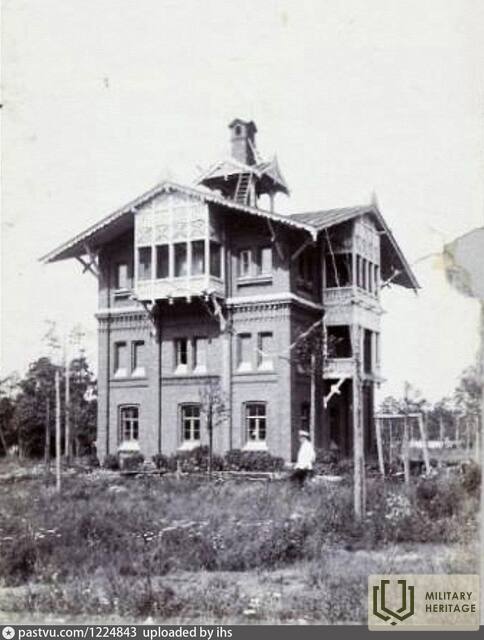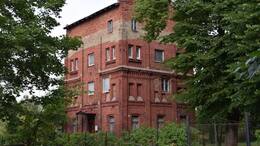Winged soldiers
The use of carrier pigeons or carrier pigeons was a widely used means of communication in the early 20th century.
There are also a number of curious events associated with the Sea Mail Pigeon Station. A man, Michael Ozols, was caught cheating - hawks shot near the station were well paid, and the man noticed that he was showing chicken legs instead of predator claws.
The first experiments with birds began in the spring of 1898. The winged liaison officers were taken and released from the ship 20 miles offshore. Good luck - nine out of 20 pigeons have returned, three of them have lost the "important papers". Lieutenant Captain Olimp Kvascov was transferred to Sveaborg Fortress for failure and loss of crown property (one pigeon was valued at 2.68 rubles). As it turned out later, the spring encouraged some combatants to move to the attic of the townhouses near the free pigeons. In the summer of 1901, the experiments were continued by releasing the birds from the ships in the roadstead of the port of Danzig. This time, Russian diplomats had to find out, because for some reason the Prussians have expressed outrage at the peculiar operation of the Russian navy in the territorial waters of Germany with the peaceful flights of the Liepaja fortress. In February 1904, smoke from warships of the 2nd Pacific Squadron was carried out during the raid on the port of Liepaja. 200 pigeons were "commanded" from the station to naval sites in the Korean and Japanese seas. On November 5, when the cruiser Oleg was in the departing armada 200 miles from Liepaja, the propeller broke. The commander, second-rank captain Oton Richter, did not believe in the miracle, but at 2 o'clock in the afternoon ordered the release of five pigeons from the deck with a mail. On the morning of November 6 at The report carried by the 4 two pigeons was on the desk of Admiral Ireck, Commander of the Liepaja Base. The pigeons of Liepāja station also took part in the large maneuvers of the Russian Baltic Fleet in the summer of 1907. For example, the minesweepers Ukrainec, Gaidamak and Vsadnik launched 25 pigeons 30 miles offshore, seven of which disappeared. The largest batch of pigeons, 197, was placed on a transport ship in the hangar and released from cages 50 miles away. 13 pigeons did not return. Until 1914, postal pigeons were used relatively successfully in communications from Liepaja with Russian coastal artillery batteries in present-day Hiiumaa and Saaremaa.
Related timeline
Related topics
Related objects
Pigeon post sea station in Karosta
The former naval pigeon station No.2 - actually a breeding station - is located in Karosta, Pulkveža Brieža iela 6. It was built between 1899 and 1900 and was intended to house about 450 carrier pigeons - winged soldiers. In later years, the building was converted into apartments, so that only the red brick volume of the building remains. The other post pigeon station, No 1, which has not survived, was intended for the use of 750 ground troops and was located at the northern end of Atmodas Boulevard.
The carrier pigeons were a simple, fast and reliable way to ensure communication between the shore and ships at sea. Although the radio telegraph, as a modern communication device, was already widely used at that time, the use of pigeons was considered safer - an enemy could only intercept a message by intercepting the carrier pigeon itself. The carrier pigeons moved at an average speed of 60 km per hour, but in favourable wind conditions they could move at speeds of up to 100 km per hour. Pigeons had to be specially prepared and trained, so handling them required care and patience. The homing pigeon's communication worked through the birds' ability to return to their home cage. When the bird was transferred to another location - a pigeon station, release and release point - and released with a message capsule, the little messenger returned to its home cage. In order to ensure communication between the two pigeon stations, it was necessary to keep a certain number of birds in each, which had grown up in the correspondent's communication, or carrier pigeon, station. Each year the pigeons were involved in various manoeuvres and competitions. Also after Latvia's independence, from 1920 to 1940, an army carrier pigeon station was located in Liepāja for the Latvian Army's Courland Division, which was able to communicate with both Riga and Daugavpils. During the inter-war period, stray communication pigeons from Germany, Poland, Lithuania, Finland and Estonia also wandered into Latvian territory. Pigeons from Latvia were also suddenly found in neighbouring countries.
The building has been rebuilt several times over the years and is now a residential building. But the distinctive shape of the building, made of the red bricks characteristic of the old buildings of the Karosta, is still clearly visible from the outside.







